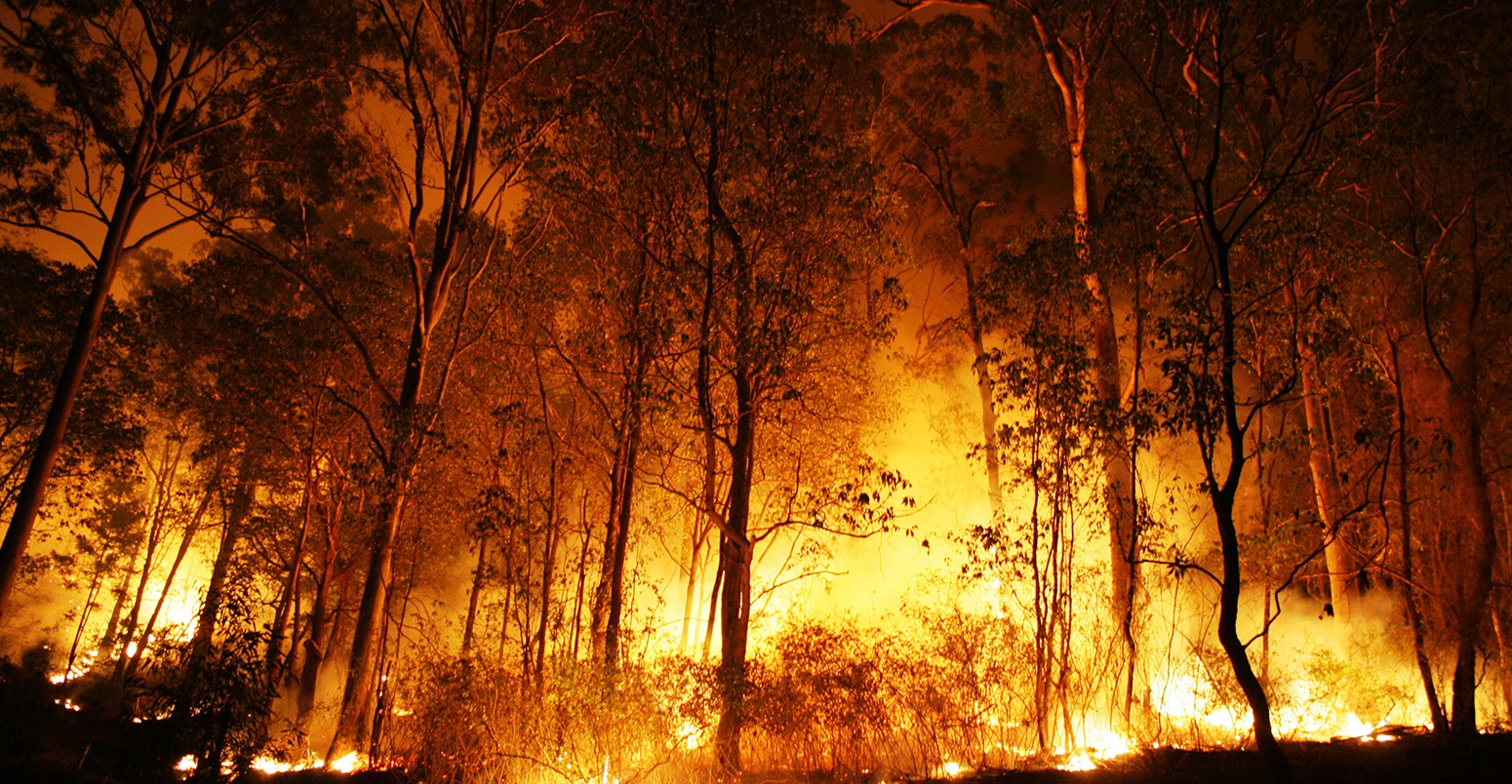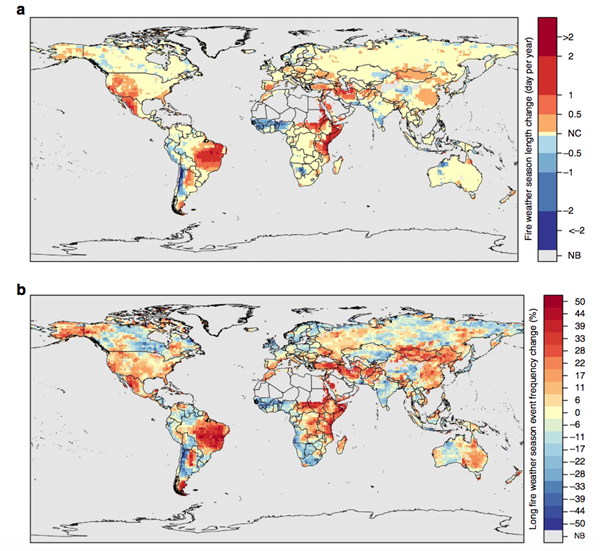
Global risk of wildfires on the rise as the climate warms, study says
Robert McSweeney
07.14.15Robert McSweeney
14.07.2015 | 4:00pmAn average of 3.5m square kilometres of land go up in smoke each year as a result of wildfires. Annual carbon dioxide released in these infernos can exceed half the emissions from humans burning fossil fuels.
A new study finds that the number of days wildfires are likely to burn each year is increasing as global temperatures rise.
Researchers estimate that between 1979 and 2013, the wildfire season has lengthened by an average of 19% for more than a quarter of the Earth’s vegetated surface.
Weather and wildfires
From the 600 fires that claimed more than 50 lives in Russia in 2010, to the series of major bushfires in Australia in 2013 that caused $9.4bn of damage, wildfires affect much of the world’s surface.
Wildfires play an important role in flammable ecosystems, such as forests, grasslands, savannas, and shrublands. They can be managed to disperse plants, clear forests and promote grazing, or suppressed to protect human lives and property.
Most wildfires are triggered by humans – as much as 90% in the US, for example – while natural causes include lightning and lava. But the weather is the biggest driver of how much area that wildfires actually burn. Temperature, humidity, rainfall and wind speed all play a role in providing the right conditions for a fire.
A new study, published in Nature Communications, finds that changes in these different weather variables are conspiring to increase the risks of wildfires.
Fire season length
Researchers analysed three global weather datasets to develop a metric for “fire weather season length” – the number of days per month where conditions create a high fire danger. They then worked out how the season length had changed between 1979 and 2013 for vegetated areas across the world. You can see the results in the graphs below.

Graphs show a) Global average wildfire season length (expressed as a standardised anomaly), and b) Total global average area experiencing ‘long’ wildfire seasons (as a % of global vegetated area) – both from 1979 to 2013. Source: Jolly et al. (2015).
Their results show that the fire season has lengthened by an average of 19% for a quarter of the global vegetated area. This means the amount of time that conditions are ripe for wildfires has increased.
The study also looked at “long” fire seasons, defined as any season more than one standard deviation longer than the historical average season for that area. They found that the global area experiencing long fire seasons has increased by 108%, with long fire seasons now 53% more likely.
As you can see from the red areas in the maps below, the biggest changes to wildfire seasons have been in South America, western North America and East Africa. Most types of ecosystems have been affected, the researchers say, particularly tropical and subtropical grasslands, savannas and shrublands. For example, in South America, the average wildfire season is now 33 days longer compared to 1979 for these habitats.

Global patterns of fire weather season length changes from 1979 to 2013. Maps show a) Changes in fire weather season length (in days per year), and b) Changes areas experiencing ‘long’ fire weather seasons (in percent). Source: Jolly et al. (2015).
Annual burned area
So what has caused these increases? The analysis suggests that a greater number of rain-free days is responsible for almost half these changes to fire season length, and a third of changes to long fire seasons. The graph below shows how the global number of rain-free days has increased over the last 35 years.

Global average number of rain-free days from 1979 to 2013 (expressed as a standardised anomaly). Source: Jolly et al. (2015).
But other factors contribute, too, the paper says:
Areas with the most significant change in fire weather season length occur where not only temperature but also changes in humidity, length of rain-free intervals and wind speeds are most pronounced.
In the northern Rocky Mountains in the US, for example, an increase in wildfires has been linked to early snowmelt in spring, extending the dry summer.
Of course, a longer wildfire season doesn’t necessarily translate into more wildfires. So the researchers also analysed data for “annual burned area” for countries they could get data for.
The results show fire weather season length is significantly correlated with the amount of land scorched by fires each year in all eight countries they analysed: Canada, US, Spain, Portugal, Italy, France, Greece and Latvia.
Global carbon uptake
Wildfires have important implications for how much carbon dioxide the land surface can absorb and store, says lead author Dr Matt Jolly, research ecologist in the fire, fuel and smoke program of the US Forest Service. He tells Carbon Brief:
Carbon emissions from fire are, on average, as much as 60% of the net carbon sequestered by the land surface.
The study suggests that global carbon uptake is reduced when average wildfire seasons are longer, Jolly says, and fires can affect whether land is absorbing or producing carbon:
Fire can heavily tip the balance of land carbon uptake and strongly influence global atmospheric carbon accumulations.
How wildfires are managed can actually mean carbon emissions are substantial when they do strike, says Dr Patrick Gonzalez, climate change scientist for the US National Park Service, who wasn’t involved in the study. He tells Carbon Brief:
Wildfire could increase on landscapes where a century of fire suppression has caused an unnatural buildup of fuels, such as in North and South America, Europe, southern Africa, and Australia, causing a pulse of carbon emissions.
And with the trend for longer fire seasons likely to continue, wildfires could create a positive feedback loop of higher carbon emissions from the land, the paper concludes.
Main image: Bushfire burning at night.
Jolly, W.M. et al. (2015) Climate-induced variations in global wildfire danger from 1979 to 2013, Nature Communications, doi:10.1038/ncomms8537
-
An average of 3.5m square kilometres of land go up in smoke each year as a result of #wildfires
-
Global risk of #wildfires on the rise as the climate warms, study says

